Rene Herse – The Book
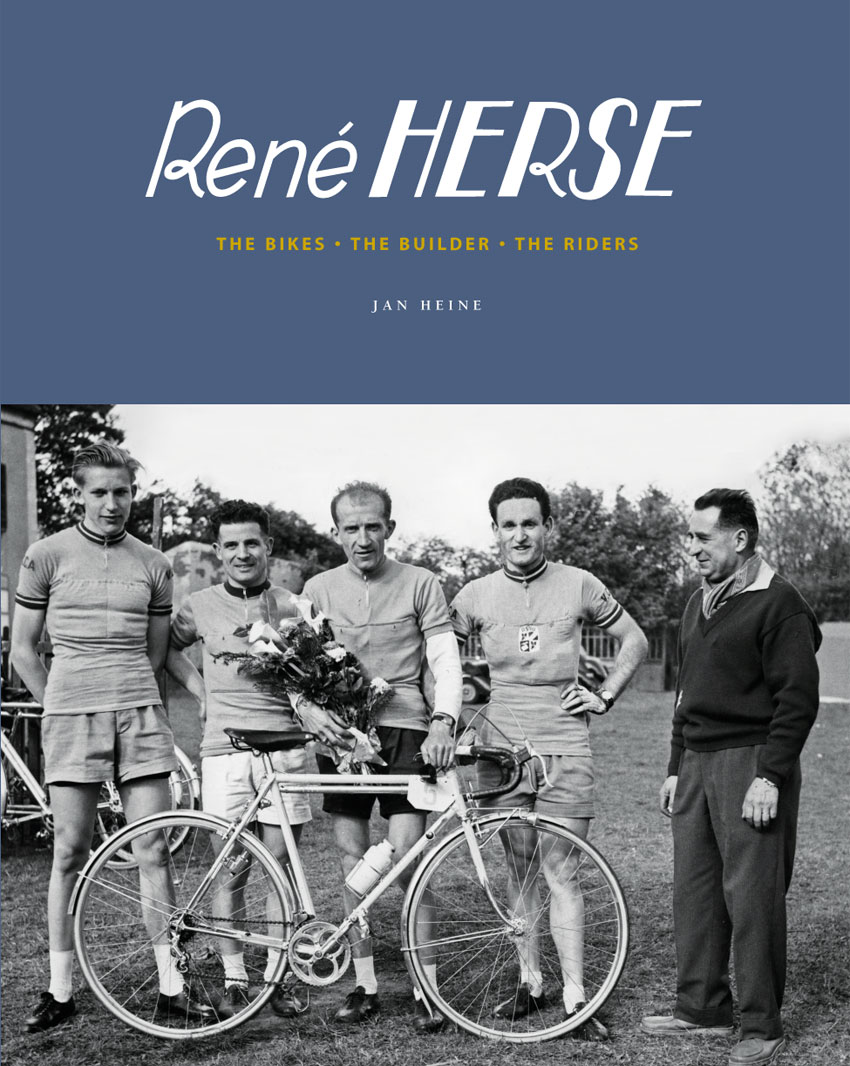
Our new book! Instead of telling you about René Herse, I’d like to tell you how this book came about. While I was visiting René Herse’s daughter Lyli many years ago, we talked about restoring the tandem that placed first in the 1956 Paris-Brest-Paris. Lyli thought that she might have some parts in her garage that could be useful. So we headed out and began to rummage around. Among the lawn mower and gardening tools, there were indeed a few interesting supplies, like hollow aluminum fender stays apparently left over from the 1940s technical trials. (The valuable Herse components were sold to another builder many years ago when the shop closed.) Then we came upon two suitcases. “What is in there?” I asked Lyli. She replied: “I don’t know. Open them!”
The suitcases were full of photos. Not just hundreds, but thousands of photos. Not just snapshots; most were of excellent composition and quality, taken by professional photographers. As I looked through them, the whole history of Cycles René Herse began to unfold in front of my eyes. Here was a photo of René and Marcelle Herse as a young couple. There was the first René Herse component, a pedal, and his first crankset; I knew the pedals only from a drawing in Herse’s advertisement in pre-war issues of Le Cycliste.
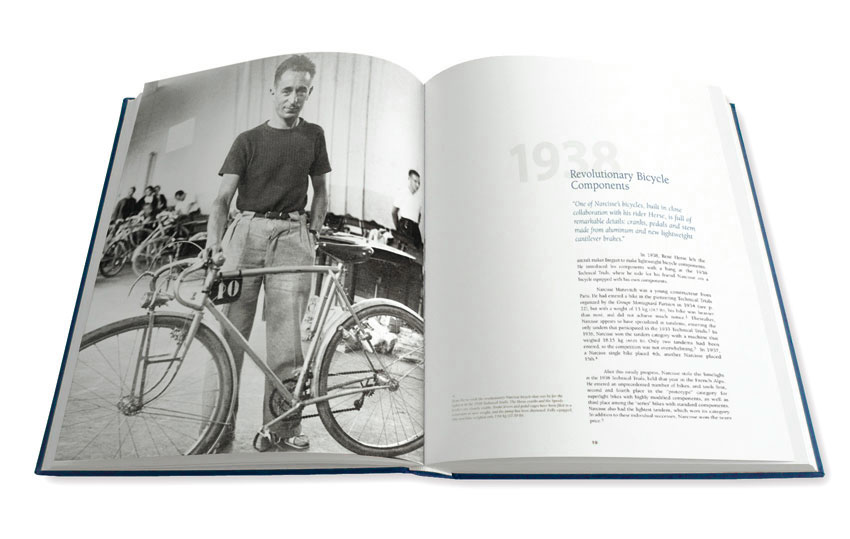
Herse had introduced his components at the 1938 Technical Trials, where he rode a bike made by Narcisse, but equipped with Herse’s own components. Contemporary reports explained that the bike was lighter than any bike before, but nobody knew any longer what that Narcisse bike looked like. In the suitcase was a photo of Herse at the Trials with his Narcisse! It’s the photo shown above.
There were photos of war-time events that I had never heard about. I found many photos of Herse’s daughter Lyli with various captains winning the tandem category of almost a dozen Poly de Chanteloup hillclimb races. Dramatic night-time images showed riders in Paris-Brest-Paris. Others featured Herse with his team at the finish of competitive events. There was Lyli in the United States, visiting customers and friends during the 1960s, when American orders helped to keep the shop afloat.
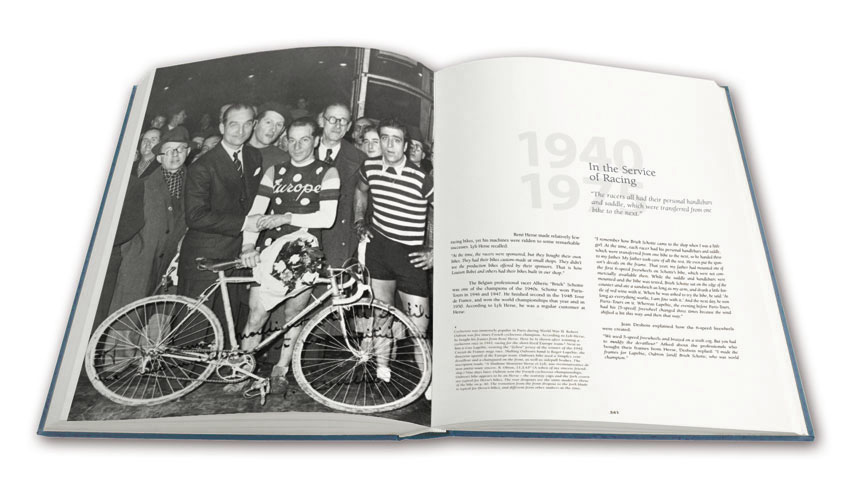
The suitcases contained autographed photos from famous racers thanking René Herse for his assistance. Could they corroborate the stories that many champions had ridden on frames that had been made by Herse?
It was a treasure trove of previously unseen materials. Some of the photos were inscribed on the back in Marcelle Herse’s neat handwriting, but most lacked identification. During my research, I was fortunate to speak with many of the old “Pilotes de Herse” who are still alive. Those discussions and their rides have left indelible memories.
Gilbert Bulté took on the task of identifying many events and riders. Paulette Porthault, “the Aunt”, who had known Herse from the earliest days, told us about riders and events that we never had even had heard about, like the war-time technical trials. Women who raced on Lyli Herse’s team in the 1970s filled in other parts of the story. It took half a decade of detective work to piece together this entire history, and by the end, I could recognize some riders like Lyli Herse even if their faces were obscured, just by their way of sitting on the bike. Many company records of Cycles René Herse survive, which helped establish the history of the company, and allowed me to corroborate riders’ and employees’ reminiscences.
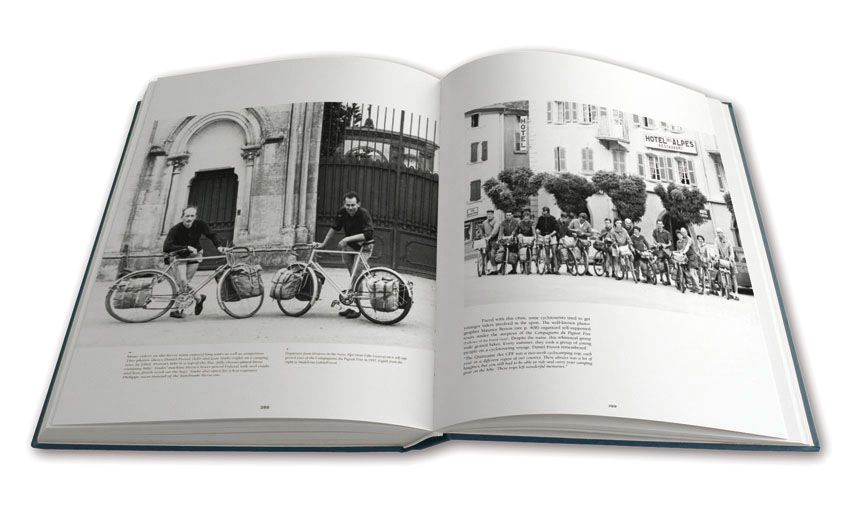
From the moment we opened those suitcases, I knew that these archives had to be shared with the world in a new book. The stories from the riders are even richer. As we did our research, one rider after another shared their photo albums to complete the story. For example, Daniel and Madeleine Provot provided the wonderful images of touring during the 1950s (above). As part of this research, we recorded many wonderful stories that otherwise would have been forgotten. Together with the photos, these memories tell a wonderful story of a time when cyclotouring was not just a hobby, but a way of life.
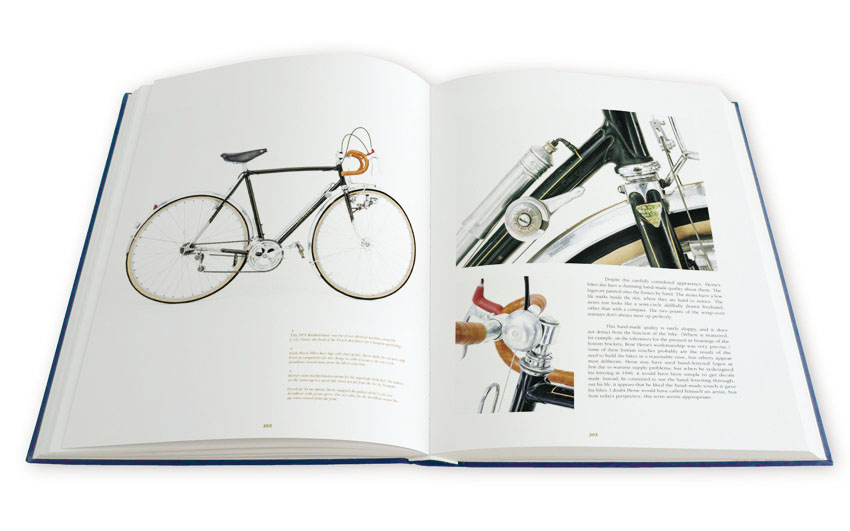
To illustrate the talent of René Herse, we set up photo studios in France, Japan and the U.S. to photograph 20 amazing, original René Herse bikes. The bikes span the entire history of Cycles René Herse, from early machines made during World War II to the last bikes made after Herse’s death in the 1980s. They include rarities like an unridden “New Old Stock” machine from 1945 and a track bike that was ridden to half a dozen French championships.
The result is our new book René Herse: the Bikes, the Builder, the Riders. Compressing a history as rich and varied as that of this prolific builder into a single book was a challenge. Rather than cut the book to a predetermined length and leave out wonderful images and anecdotes, we decided to give this story the space it needed. The book comprises 424 pages and includes more than 450 illustrations – it is the same size but more than twice as thick as The Golden Age of Handbuilt Bicycles.
By focusing on the riders who enjoyed cycling in the company of good friends, I hope this book will inspire future generations of cyclists. The book is being printed now, and will be available in November or early December 2012. For more information and additional photos, or to pre-order your copy, click here.


